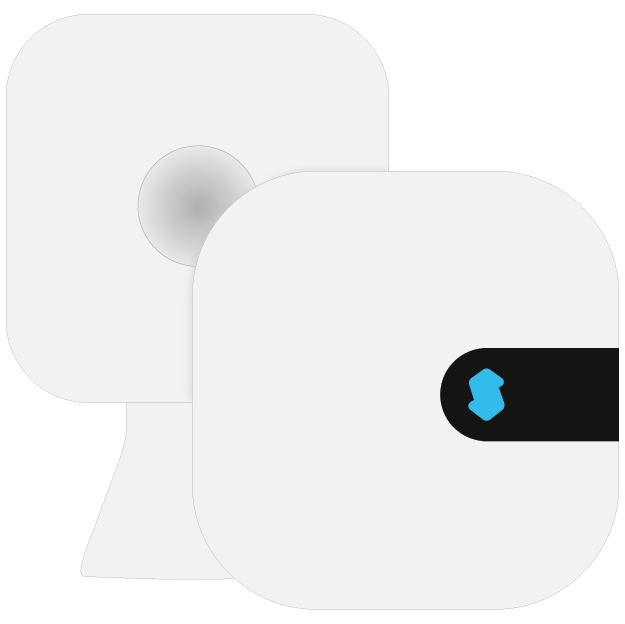Ideal Solutions for Energy-Efficient Home Climate Control
The battle between comfort and cost hits home every month when your utility bill arrives.
Most homeowners face a frustrating choice: suffer through temperature extremes or watch their energy bills skyrocket. The average American household now allocates over $1,000 annually to heating and cooling alone, yet many still experience uncomfortable hot or cold spots throughout their homes.
The good home climate control devices news? Recent advances in home climate control technology have eliminated this painful tradeoff. This article cuts through the marketing hype to examine practical, proven solutions that deliver both superior comfort and meaningful energy savings.
The Limitations of Traditional Climate Control Methods
Conventional temperature management relies on basic thermostats and manual adjustments that waste energy in several ways:
- Single-point temperature sensing creates hot and cold spots throughout your home
- Simple on/off cycling causes temperature swings of 2-4°F
- Manual adjustments lead to cooling or heating empty rooms
- Lack of humidity control forces systems to work harder than necessary
The Department of Energy reports these inefficiencies waste up to 30% of the energy used for heating and cooling. Without effective climate control systems for home use, you pay to condition spaces unnecessarily or ineffectively.
Traditional systems also lack the ability to adapt to changing conditions automatically. A basic thermostat can't account for occupancy patterns, weather changes, or time-of-use electricity rates. This inability to control the climate dynamically results in constant manual adjustments or accepting less-than-ideal conditions.
Smart Thermostats: The Foundation of Modern Climate Control
Smart thermostats stand as the cornerstone of modern home climate control devices. Unlike basic programmable models, these systems learn from household behaviors, adapt to changing conditions, and connect with other smart home components.
The ecobee thermostat line ($170-$250) introduced remote sensors to fix the single-point measurement problem. Sensors placed in different rooms create an accurate temperature map of your entire home. The Smart Thermostat Premium model adds built-in air quality monitoring and voice control capabilities.
Nest thermostats ($130-$249) take a different approach with their learning algorithm. The system observes when you adjust temperatures and automatically creates a schedule based on your patterns. Their Farsight feature activates the display when you approach, allowing for quick visual confirmation of current settings.
For budget-conscious homeowners, the Honeywell Home T9 ($199) and Emerson Sensi ($90-$169) offer many similar features at lower price points. The Honeywell T9 includes room sensors similar to ecobee, while the Sensi focuses on simple operation and compatibility with existing systems.
EPA measurements show properly implemented smart thermostats cut heating costs by 8% and cooling costs by 15%—adding up to $50-$100 in annual savings for typical households.
 Smart AC Controllers: Upgrading Window and Split Units
Smart AC Controllers: Upgrading Window and Split Units
For homes without central HVAC that rely on window units, portable ACs, or mini-splits, smart AC controllers upgrade these standalone devices into connected climate control components.
Sensibo ($99-$149) offers controllers that work with virtually any air conditioner with an infrared remote. Their Climate React feature responds to both temperature and humidity, addressing the common problem of overshooting target temperatures when trying to reduce humidity.
Competition in this space has increased significantly, with several alternatives now available:
- Cielo Breez ($69-$99) provides similar functionality at a lower price point, with scheduling, geofencing, and filter change reminders
- Ambi Climate 2 ($129) uses AI to learn your comfort preferences under different conditions
- Tado Smart AC Control V3+ ($99-$119) includes open window detection and weather adaptation
These controllers add smart capabilities to conventional units, enabling precise climate control without replacing the entire air conditioner. Renters and homeowners without central air gain a cost-effective path to smarter cooling for as little as $69.
Smart Vents: Targeted Room-by-Room Climate Control
Uneven temperature distribution remains a major challenge in home climate control. A single HVAC system, even with a smart thermostat, creates temperature variations of 5-8°F between rooms in a typical multi-room home.
Smart vents address this issue by selectively directing airflow to specific areas. Flair Smart Vents ($80 per vent) replace standard HVAC registers and automatically adjust airflow based on room-specific temperature goals. Their system includes pressure sensing to prevent damage to HVAC systems from restricted airflow.
Keen Home Smart Vents ($80-$90 per vent) offer similar functionality with battery-powered operation that simplifies installation. These systems integrate with major smart home platforms to create coordinated zoning without the expense of installing multiple HVAC systems.
Energy Star research confirms properly zoned heating and cooling cuts 30% from a typical home's energy bill. These climate control modules direct conditioned air exactly where needed—a guest room might receive minimal airflow when vacant but full conditioning when occupied, eliminating the waste of treating unused spaces.
Complementary Technologies That Enhance Climate Control
 Complete home climate control requires more than thermostats and AC controllers. These complementary technologies cut energy needs while enhancing comfort:
Complete home climate control requires more than thermostats and AC controllers. These complementary technologies cut energy needs while enhancing comfort:
Smart Ceiling Fans
Ceiling fans use minimal electricity while creating a wind-chill effect that makes rooms feel cooler. The Lawrence Berkeley National Laboratory found that ceiling fans allow you to raise thermostat settings by about 4°F with no reduction in comfort, reducing AC energy use by up to 40%.
Smart fans from Hunter ($120-$300) and Big Ass Fans Haiku ($500-$1000) integrate with climate control systems for home use, automatically adjusting speed based on temperature conditions. These fans reverse direction seasonally, providing cooling in summer and helping circulate warm air in winter.
Automated Blinds and Shades
The Department of Energy calculates windows account for 25-30% of residential heating and cooling energy use. Smart blinds automatically adjust throughout the day to block summer heat and capture winter warmth, addressing ththermostatis major efficiency gap.
Lutron Serena Smart Shades ($350-$600 per window) can be programmed to lower during peak summer heat and raise to capture solar warmth in winter. For a more affordable option, IKEA FYRTUR blinds ($129-$179) offer similar automation capabilities that complement other climate control efforts.
DOE research shows that smart blinds can reduce solar heat gain by up to 77% when closed, significantly reducing cooling needs during summer months.
Energy Monitoring Systems
Energy monitoring systems reveal exactly how your climate control choices affect consumption, providing the data needed to make informed efficiency decisions.
The Sense Home Energy Monitor ($299) uses machine learning to identify individual appliances in your energy signature, showing exactly how much your HVAC system is consuming. The Emporia Vue ($130-$170) offers circuit-level monitoring that can track heating and cooling equipment separately.
These systems help identify inefficiencies and verify the effectiveness of your climate control improvements, often revealing unexpected energy drains that counteract efficiency efforts.
Creating an Integrated Climate Control System
 Modern home climate control devicesdeliver maximum efficiency when functioning as a coordinated system. Here's a practical implementation strategy using multiple components:
Modern home climate control devicesdeliver maximum efficiency when functioning as a coordinated system. Here's a practical implementation strategy using multiple components:
- Smart thermostat as the primary controller - The thermostat serves as the central brain, managing overall temperature goals
- Room sensors for zoned awareness - Sensors throughout the home provide location-specific feedback
- Smart vents for targeted conditioning - Airflow adjusts automatically to prioritize occupied spaces
- AC controllers for supplemental cooling - Window or portable units address specific hot spots as needed
- Automated blinds for passive management - Blinds adjust to reduce heating/cooling loads from windows
- Ceiling fans for air circulation - Fans run at appropriate speeds to enhance comfort without changing the thermostat
This layered approach to climate control creates a personalized comfort zone in each room while minimizing overall energy use.
For example, a south-facing home office might use this combination during summer:
- Smart thermostat maintains 76°F baseline
- Smart vents reduce airflow by 40% to seldom-used dining room
- Automated blinds close during peak sun hours (10am-2pm)
- Ceiling fan activates at medium speed when occupancy detected
- Supplemental window AC (controlled by Sensibo) activates only when temperature exceeds 78°F
Integration requires a compatible smart home platform:
- Amazon Alexa
- Google Home
- Apple HomeKit
- Samsung SmartThings
Each platform supports different devices, so verify compatibility before purchase to ensure seamless operation.
Installation and Setup Considerations
Successfully implementing climate control systems for home use requires addressing these practical challenges:
Wiring Requirements
Tests of American homes reveal 40% lack a C-wire (common wire) required by most smart thermostats. Homeowners can solve this through:
- Power adapter kits included with ecobee and some Nest models
- Professional installation with new wiring ($75-$150)
- C-wire-free thermostats like the Emerson Sensi ($90) that run on battery power
Compatibility Checks
Before purchasing any climate control module, verify compatibility with your existing equipment:
- Smart thermostats work with most 24V HVAC systems but may have limitations with heat pumps or multi-stage systems
- AC controllers typically require air conditioners with infrared remote controls
- Smart vents need appropriately sized registers and adequate clearance
Most manufacturers offer online compatibility checkers or support lines to verify before purchase.
Network Requirements
Smart climate control devices rely on consistent WiFi connectivity. Consider:
- Signal strength in thermostat location
- Network capacity for multiple connected devices
- Mesh network systems for larger homes with coverage issues
Devices disconnected from WiFi will typically maintain basic functionality but lose remote control and automation capabilities until connection is restored.
FAQ
How much can I expect to save with smart climate control?
EPA measurements confirm smart thermostats cut heating costs by 8% and cooling costs by 15%. A comprehensive approach using smart vents and automated blinds pushes savings to 20-30% on climate costs. With half of a typical $2,000 annual energy bill going to heating and cooling, homeowners save $200-$300 yearly.
Can I mix different brands of climate control devices?
Yes. Most devices connect through smart home platforms like Alexa, Google Home, or HomeKit. Products from the same manufacturer often provide deeper integration—Nest thermostats work seamlessly with Nest Temperature Sensors, while ecobee thermostats pair perfectly with ecobee SmartSensors. Always check the compatibility chart for your preferred smart home ecosystem before purchasing.
Do I need professional installation for these climate control systems?
Installation requirements vary by product. Smart thermostats typically require basic wiring knowledge, while AC controllers and smart plugs can be installed without any technical expertise. Smart vents replace existing registers and require no wiring. If you're uncomfortable with thermostat wiring, professional installation typically costs $75-$150 and ensures proper system protection.
Will these systems work if my internet goes down?
Yes. Most home climate control devices maintain basic functionality during internet outages. Thermostats will continue following their last schedule and respond to manual adjustments. Remote access and advanced automations will be unavailable until connectivity is restored, but basic temperature maintenance continues.
What's the difference between a smart thermostat and a climate control system?
A smart thermostat is a single component that replaces your existing thermostat to control heating and cooling equipment. A complete climate control system for homes combines multiple technologies—potentially including a smart thermostat, AC controllers, smart vents, automated blinds, and ceiling fans—working together to maintain comfort while minimizing energy use. The thermostat is just one part of this comprehensive approach.



































.jpg?height=200&name=photo_2024-11-08_11-56-41%20(1).jpg)
.jpg?height=200&name=image1%20(2).jpg)

.jpg?height=200&name=photo_2024-06-14_21-04-45%20(1).jpg)